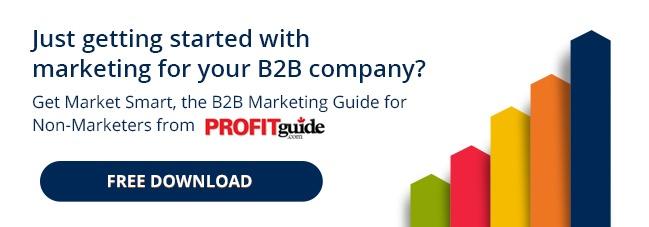Driving Sales By Analyzing Customer Data - Is It Worth It?

The promise of driving sales by analyzing customer data seldom holds true for small and mid-sized B2Bs
There’s a lot of talk about using 'big data' to drive sales. According to this line of thinking, your sales and marketing teams had better be using big data to drive sales, or you’ll lose out to competitors who do.There are great examples of the power of big data for big companies. In recent years we’ve heard how Target knew a teenage girl was pregnant before her father did, how data prompted Netflix to create House of Cards, even how the Canadian government is using big data about prescriptions to identify drug abusers, among other things.
But when it comes to small and mid-sized B2B companies, I disagree with the fad.
The promise of driving sales by analyzing customer data seldom holds true for small and mid-sized B2Bs, and focusing on big data is a dangerous premise for them.
The reason? Because the data simply doesn't exist.
The majority of small and mid-sized B2B companies do hundreds or thousands of transactions a year, not the millions that are needed to conduct meaningful data analysis.
There's a better way for mid-market B2B companies to gain insights that drive sales: By talking to customers.
I’ve seen entrepreneurs, sales people and inventors extract phenomenal value from a few discussions with potential customers. The small details and pieces of knowledge that they elicit from those conversations become the basis for new services, pricing models and delivery processes. You don’t need to spend hundreds of hours crunching data to get to those basic insights. Just take the time to have conversations with customers and potential customers, and then translate what you hear into something new for your company rather than ignoring what you've been told.
Here’s an example:
As part of providing outsourced marketing services, my company was helping an engineering firm prioritize their target markets and articulate their value proposition. To get answers to those strategic questions, we briefly considered doing a quantitative market assessment. But our client is relatively small—about $10 million in revenue—and we were not sure we’d have confidence in decisions coming from a quantitative assessment, which often feel superficial.
What they did have was some 100 customers and prospects who were deeply knowledgeable about our client’s and competitors’ products, and who were happy to share their views and experiences. So rather than a quantitative survey, we conducted 15 qualitative interviews with customers in different markets. ‘Qualitative interviews’ is a fancy way to say ‘conversations,’ a series of 45-90 minute phone calls.
The conversations were structured, although our interviewees probably didn't feel that. Although we had a list of information objectives and specific questions that we wanted answers to, we held the conversations in an organic way that was enjoyable for the interviewee.
That yielded much better insight into how they make buying decisions than any canned quantitative survey could. After each interview, we carefully captured our notes and built a database (a fancy way to say ‘Excel spreadsheet’), which categorized the comments we’d received and helped us evaluate the conversations in aggregated.
From that relatively simple process we learned which situations these customers needed our client’s products in and what value those products provided. This knowledge translated directly into identifying the most lucrative markets for the company and determining how they should pitch their products.
My advice is simple: if you're in charge of sales and marketing at a small or mid-sized B2B company, don’t get lead astray by the promise of driving sales by analyzing customer data. Focus instead on probing conversations with a small sample of knowledgeable customers. For insights that will help you market well, pick quality over quantity every time!
.png?width=2361&height=488&name=Mezzanine%20Logo_Horiz_RGB_on%20blue%20(1).png)


